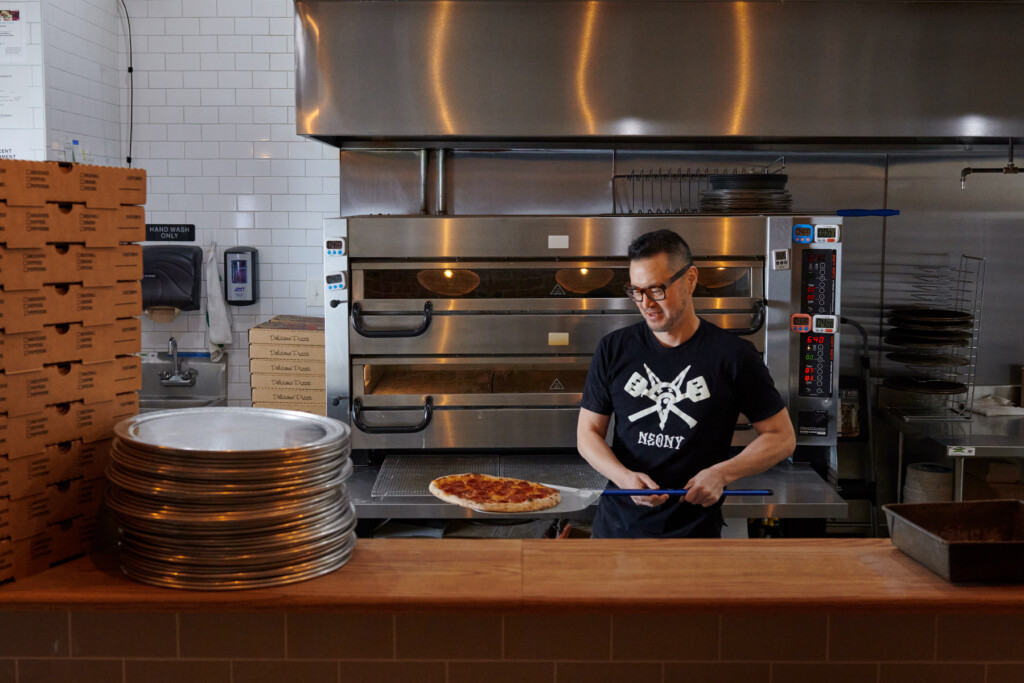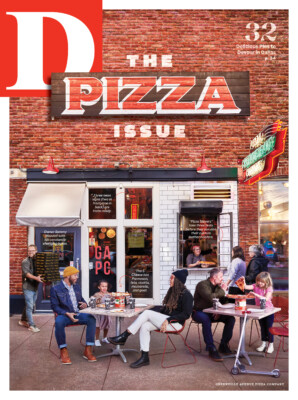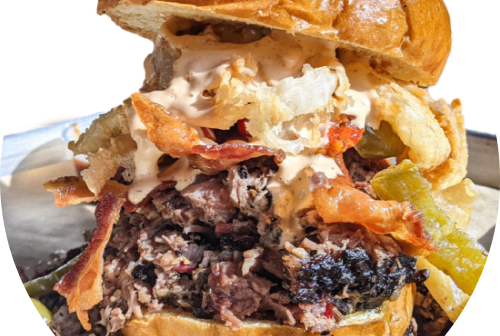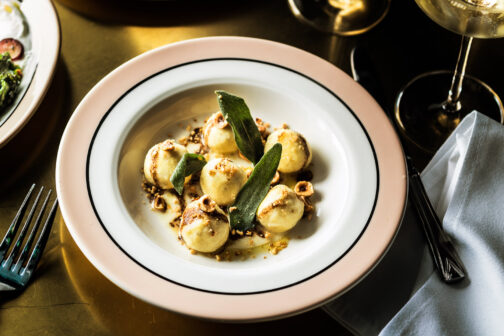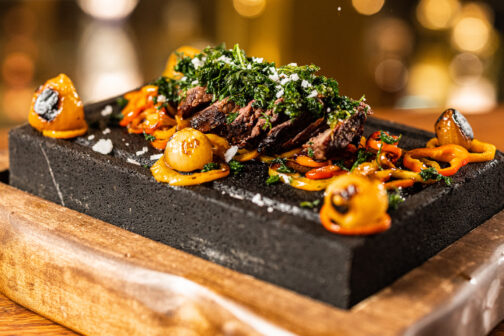Pizza crust is personal. Whether it’s thick or thin, chewy or crispy, preferences vary by person and region and can make or break a pizza experience. But there’s no dispute that there’s a science to forming a delicious, flavorful crust.
At Neony Pizza Works in Oak Cliff, owner-chef Alex Ham takes full advantage of the fermentation process, giving all of his pies the benefit of dough that’s been fermented for an impressive 72 hours. Aging dough is not an unusual practice; Ham says letting the dough rise for 24 hours or longer is common among many pizzerias. Yeast, a single-celled, sugar-eating fungus, needs time to produce the carbon dioxide and alcohol that makes bread tasty. A longer fermentation creates a more flavorful bread that is lighter and easier to digest.
“Simply put, it just tastes better,” he says.
Before opening Neony, in November 2021, Ham was a longtime professional photographer. He moved to Seoul in 2013 after his dad fell ill. While there, he decided to open a pizza shop called Slice and serve authentic New York-style pizza, but he didn’t have the skillset. “Thank God for YouTube and the internet,” he says. “I didn’t know anything.”
A basic bread recipe uses a mixture of flour, yeast, and water. For pizza, Ham learned, varying the flour-yeast-water ratios creates different crusts, and the time it takes dough to rise and bake can introduce a variety of flavors and textures. The process he developed creates a crust that is a blend of Neapolitan and New York styles.
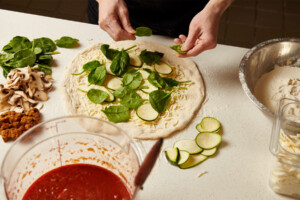

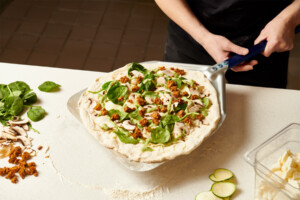

For a pillowy Neapolitan crust, finely milled flour—also known as 00—is mixed with salt, water, and yeast. Neapolitan-style dough doesn’t have to be kneaded, but it takes about three to five days to rise, and some places use a “cold ferment” method (aka “in the fridge”). These pizzas take about 90 seconds to bake in an extremely high-temperature oven.
New York-style dough combines bread or all-purpose flour with sugar, salt, yeast, olive oil, and water. Unlike Neapolitan, it doesn’t require a long ferment, but it should sit for at least 24 hours before it heads into the oven. The pizza bakes for about 10 to 12 minutes, making it crispy but foldable—a signature of a New York-style slice.
Neony’s dough is a blend of 00 and 0 flours, yeast, water, and oil. Cold fermented in stacked trays in the fridge, the dough balls are flat, soft, and have a slightly sour smell to them when done. (That’s not a bad thing, Ham says.) The pizzas are baked at about 650 degrees for four minutes. The result is a crispy yet fluffy and flavorful crust that acts as the perfect base.
Neony serves about a dozen pizzas with specialty toppings, including the Bánh Mì (house-made lemongrass sausage, cucumber, pickled carrots, cilantro, and drizzled house-made cilantro aioli) and popular Cup and Char (charred pepperoni cups with mozzarella and dollops of whipped mascarpone). Although the sauce, pesto aioli, and sausage are made in-house, most of Ham’s topping ingredients are simple, and that’s by design. To Ham, the crust is the most important part of any pizza.
“I could just make that dough and give it to you with butter, and you’d go, ‘Mmm, this is good. I like this,’ ” he says. “But you could have this pizza on, say, Wonder Bread and not like it as much.”
This story originally appeared in the February issue of D Magazine with the title “Dough: It Needs Time.” Write to [email protected].
Author



